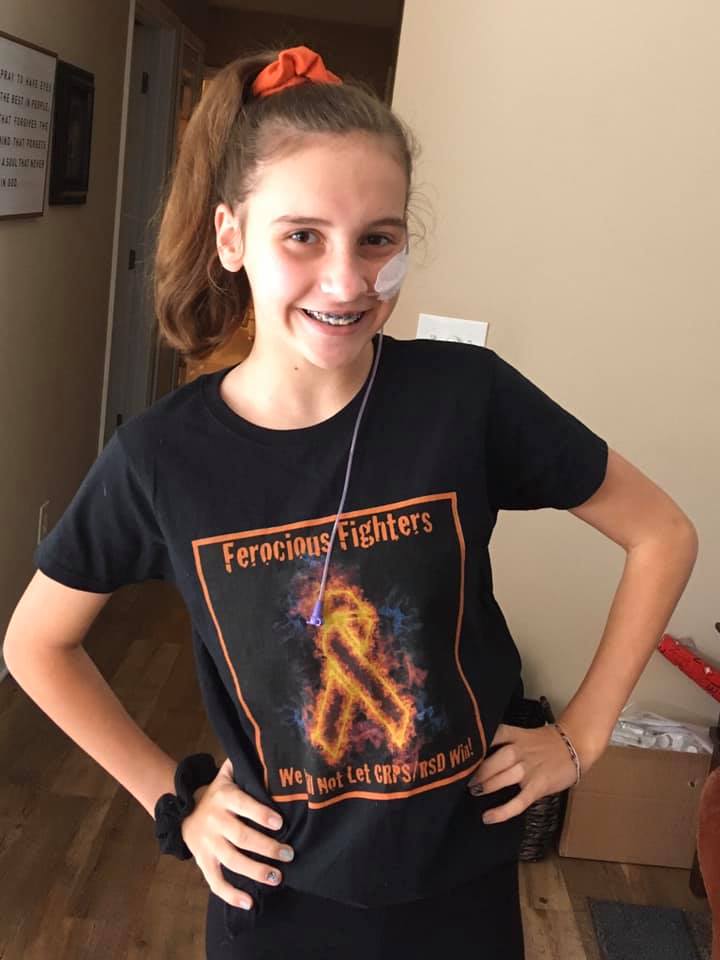Written by Rachel W. for the RSDSA blog.
 How and when did you develop CRPS/RSD?
How and when did you develop CRPS/RSD? In September 2018, I was at tumbling practice and I sprained my ankle. My physical therapist noticed some signs of CRPS during my first few sessions, and at my one month follow up appointment with my orthopedic doctor, I was officially diagnosed with CRPS. I realize how lucky I am to have been diagnosed so quickly!
What has daily life been like since your diagnosis?
It has been a struggle – a constant battle of whether or not I am going to wake up being able to get out of bed in the morning. It started in my ankle and has spread to other areas of my body. It has been hard because I am in middle school and there is a lot of judgement and people are not aware of what CRPS is. Since my diagnosis, I started having symptoms of dysautonomia and am now diagnosed with postural orthostatic tachycardia syndrome (POTS), too. I have developed constant stomach pain with eating and lost a significant amount of weight in a short period of time resulting in an nasogastric tube, so we are still looking for answers.
What is one thing you wish those without CRPS/RSD could understand?
I wish others could understand that it is very painful and not like any pain they have ever experienced before. People with CRPS just want to just be normal, but we also want others to be more aware and understanding of CRPS.
What advice would you give to newly diagnosed Warriors?
It is going to be a journey, a long road, but there are people out there who are going to help you. You have to find the right doctors and support. You can get through it! It is a new chapter, life is not over, despite the struggle. You will be stronger in the end.
What advice would you give to Warriors who have had CRPS/RSD for many years?
I would tell them that they are so strong!
What activities or treatments have helped you find temporary or long term relief?
Physical therapy a few times a week was helpful in being able to move again and live more of a ‘normal’ life. I had episodes of paralysis from sympathetic overflow and I had Calmare Therapy that helped my paralysis stop, though I am not in remission fully as I still have constant pain. The Therapy has helped me walk without crutches, a boot, or wheelchair use. I also find aquatic therapy/warm water swimming is a great way to help desensitize my system and it is an easy way to get exercise without too much pain afterwards (when not having too much allodynia and I can handle the water).
Anything else you would like to add?
Do not let anyone tell you it is in your head or that the pain you experience is not real. You are in pain! Every day will make you stronger! It is important to surround yourself with the right people who can help you live the best life you can live despite CRPS and all that comes with it!
Please consider making a donation to RSDSA today!
